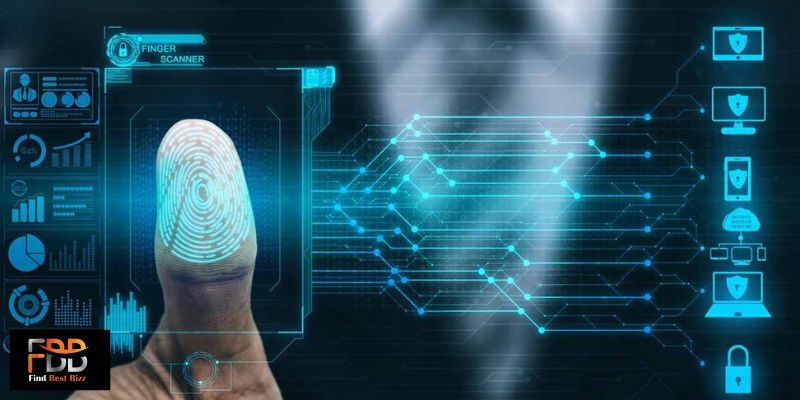The use of biometric technology has rapidly increased over the past few years. Fingerprint biometric technology is one of the most popular forms and has been gaining popularity for many reasons. This blog post will explore the emergence of fingerprint biometric technology and its various benefits, including improved security and user convenience. We will also look at some potential drawbacks of using this technology. Finally, we will discuss the potential applications of fingerprint biometric technology and its future potential.
A Brief History of Biometrics
Biometrics has been around since the dawn of humanity, though identifying individuals by their physical characteristics has only recently become part of mainstream technology. Before the advent of modern biometric technology, humans identified each other through visual recognition and verbal communication. This form of identification needed to be more reliable and open to manipulation, making it an unsuitable solution for modern society’s needs. Here you can visit Biometricsupply.com to browse some of the popular fingerprint scanners available to the consumer market.
Biometric identification began gaining traction in the 20th century when the FBI developed fingerprint databases. The bureau created a system of collecting fingerprints from criminal suspects and using them to identify repeat offenders. This successful system led to more sophisticated biometric technologies being developed in the following decades.
How fingerprint biometrics works
Fingerprint biometrics is a form of identity authentication that relies on the unique characteristics of an individual’s fingerprint to verify their identity. This technology has been around for centuries but only recently has become widely used in various applications, from access control systems to financial transactions.
Fingerprint biometric systems rely on the fact that each person’s fingerprints are unique and cannot be duplicated. A fingerprint scanner captures an image of the user’s fingerprint and then stores it in a database. This image is then compared to a previously stored image to authenticate the user’s identity.
Incorporating biometrics into our daily lives
Biometric technology has become an increasingly integral part of our everyday lives, offering convenience and security in various ways. Fingerprint biometrics, in particular, is being used in many industries, from banking and healthcare to government agencies and educational institutions.
Biometric authentication has made accessing financial accounts easier and more secure. Financial institutions are beginning to offer customers the option of using their fingerprints to sign into their accounts. This helps to reduce the chances of someone gaining access to an account without proper authorization.
Healthcare organizations use biometric technology to protect patient information better while streamlining processes. By replacing traditional identification methods with fingerprint biometrics, healthcare providers can ensure that medical records remain secure while allowing authorized personnel to access them quickly and easily.
The challenges of fingerprint biometrics
The use of fingerprint biometric poses a range of challenges, both technological and ethical. One of the most common concerns associated with this technology is accuracy and security. Fingerprint biometrics are not infallible, and there have been cases where they have been proven unreliable in some circumstances. Additionally, since fingerprint data is inherently personal, it is necessary to ensure that it is secure and away from unauthorized access.
Another issue relates to privacy. As with any technology that relies on collecting and storing personal information, there are serious questions about how it should be used and by whom. There are also concerns about the potential misuse or abuse of biometric data. For example, it could be used to create detailed profiles of individuals or even monitor their intrusive activities.
From the Beginning to the Present
Biometrics technology has been around since ancient times, but in the late 20th century, the development of biometric technologies began to take off. Early biometric systems relied on physical characteristics such as fingerprints, face recognition, and voice recognition to verify identity. These early systems were cumbersome and inefficient, and their accuracy could have been improved.
The emergence of modern biometric technologies in the late 1990s allowed for more accurate identification and verification systems. Fingerprint biometrics was the first major development in this area, and it quickly became the most popular biometric technology.
Fingerprint biometrics relies on a person’s unique fingerprints to identify them. The process works by capturing a person’s fingerprints with a scanner, which is then converted into digital data that can be compared to other existing fingerprints. Biometrics can also be taken from other areas on the hand, such as the palm, and you can discover some example Palm print scanners here
Final Thoughts
Fingerprint biometric has made a significant impact on our lives. This technology has revolutionized security and access control, making it easier to keep people and property safe. With advances in biometric technology, more people are using it to protect their privacy and valuable assets. The convenience of quickly identifying someone with their unique fingerprint is undeniable.
Despite the benefits of biometric technology, challenges still need to be addressed. The accuracy of biometric technology is dependent on the quality of the data collected. Issues such as false positives and false negatives can lead to inaccurate results. Additionally, privacy and data security concerns remain a top priority for companies using biometric technology.
